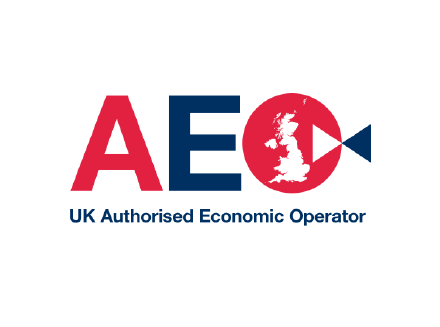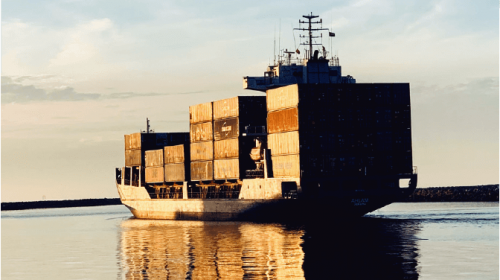Est 1946
Cylinder Head Remanufacturing Conclusion
Assessing Environmental Impact Reduction: Cast Iron Welding Services UK Cylinder Head Remanufacturing
The intended application of this life cycle assessment was to quantify the potential environmental impact reductions related to the Cast Iron Welding Services UK cylinder head remanufacturing when incorporated in the business-as-usual life cycle of the cylinder head, with emphasis on carbon footprint. The assessment aimed at investigating the environmental impacts related to the production of subcomponents, manufacturing and assembly of the cylinder head, the Cast Iron Welding Services-specific cylinder head remanufacturing prolonging its life cycle hence avoiding the manufacturing of a new cylinder head, and the end-of-life disposal of the cylinder head, by comparing the life cycle impact assessment of a business-as-usual scenario and a Cast Iron Welding Services remanufacturing scenario comparing the environmental impacts from each scenario.
Carbon Footprint Reduction through Circular Strategy: A Comparative Analysis
From the impact assessment of the business- as-usual cylinder head life cycle scenario, a carbon footprint of 7,752 kg CO2 eq. was calculated. Implementing a circular strategy in the business-as-usual scenario, such as the Cast Iron Welding Services remanufacturing process, proved to have a carbon footprint reduction potential of 89.4%, reducing the total life cycle carbon footprint from 7,752 kg CO2 eq. to 824.4 kg CO2 eq. by avoiding the manufacturing of a new cylinder head hence keeping the resources in a circular loop. The large reduction potential is found in the manufacturing stage of the cylinder head. Assessing all direct and indirect emissions related to the manufacturing stage, a carbon footprint of 7,601 kg CO2 eq. per cylinder head is calculated including all manufacturing activities, cylinder head subcomponents, auxiliaries, and transportation scenarios. In addition, the total carbon footprint including direct and indirect emissions for the Cast Iron Welding Services remanufacturing life cycle stage was calculated yielding a carbon footprint of only 684 kg CO2 eq. per cylinder head not including the reduction from the avoided output to the technosphere (new cylinder head). Comparing these two life cycle stages, with a remanufactured cylinder head substituting the manufacturing of a new one, it underlines the significant carbon footprint reduction potential from choosing a circular strategy such as remanufacturing even if the remanufacturing process is energy- or material intense.
Sensitivity Analysis of Remanufacturing Scenarios
To test the robustness of the model, five scenarios was chosen for sensitivity analysis altering specific parameters in the remanufacturing life cycle stage which was assumed to be potential variables. The five scenarios for the sensitivity analysis was as follows: 20% increase in electricity use, 20% decrease in electricity use, steel cast iron welding rods instead of nickel cast iron welding rods, remanufactured cylinder head lorry transportation to Italy instead of sea freight to Philippines, and a life cycle inventory modelling framework change to test modelling outcome robustness. The first sensitivity analysis assumed a theoretical 20% increase in the electricity usage for the remanufacturing process hence calculating a total carbon footprint reduction change from 89.4% to 89.0% or from 824.4 kg CO2 eq. to 850.0 kg CO2 eq. proving no sensitivity for any impact categories in the impact assessment model. The second sensitivity analysis assumed a theoretical 20% decrease in the electricity usage for the remanufacturing process hence calculating a total carbon footprint reduction change from 89.4% to 89.8% or from 824.4 kg CO2 eq. to 790.8 kg CO2 eq. proving no sensitivity for any impact categories in the impact assessment model. The third sensitivity analysis assumed the use of steel cast iron welding rods instead of nickel cast iron welding rods hence calculating a total carbon footprint reduction change from 89.4% to 94.1% or from 824.4 kg CO2 eq. to 729.6 kg CO2 eq. proving sensitivity for 5 out of 16 impact categories in the impact assessment model, but not for the carbon footprint impact indicator. The fourth sensitivity analysis assumed a theoretical change in the transportation scenario, transporting the cylinder head to Italy instead of the Philippines, hence calculating a total carbon footprint reduction change from 89.4% to 90.4% or from 824.4 kg CO2 eq. to 746.4 kg CO2 eq. proving no sensitivity for any impact categories in the impact assessment model. The last sensitivity analysis was made for testing the life cycle inventory modelling strength to evaluate if other types of modelling frameworks would alter the impact assessment outcome significantly hence calculating a total carbon footprint reduction change from 89.4% to 89.2% or from 824.4 kg CO2 eq. to 835.2 kg CO2 eq. proving no sensitivity for the carbon footprint impact category in the impact assessment model.
Carbon Footprint Reduction and the Case for Remanufacturing in the Maritime Industry
From the comparative life cycle assessment of the 1200 kg cylinder head and the Cast Iron Welding Services remanufacturing process as a circular strategy to extend the lifespan of the cylinder head it can be concluded that changing the linear life cycle to a circular life cycle, remanufacturing the cylinder head to prolong its lifespan, may prove beneficial in regards to significant carbon footprint reductions and thus supporting a sustainable transition in the maritime industry. Furthermore it can be concluded, that significant carbon footprint reductions may be obtained should the remanufacturing process require extensive energy to complete thus underlining that remanufacturing should be chosen as the primary strategy for prolonging the lifespan of a cylinder heads to reduce carbon footprint in the maritime industry.
7. References
Britannica. (2015). Cupola furnaces. Metallurgy, 4–6.
Dansk Standard. (2008a). DS/EN ISO 14040:2008 Miljøledelse – Livscyklusvurdering – Principper og struktur.
Dansk Standard. (2008b). DS/EN ISO 14044:2008 Miljøledelse – Livscyklusvurdering – Krav og vejledning 2. udgave, 106.
European Commission — Joint Research Centre — Institute for Environment and Sustainability. (2010). International Reference Life Cycle Data System (ILCD) Handbook — General guide for Life Cycle Assessment — Detailed guidance. Constraints. https://doi. org/10.2788/38479
Hauschild, M. Z., Rosenbaum, R. K., & Olsen, S. I. (2017). Life Cycle Assessment: Theory and Practice. Life Cycle Assessment: Theory and Practice. https://doi.org/10.1007/978-3-319- 56475-3
Hoag, K., & Dondlinger, B. (2015). Vehicular engine design: Second edition. Vehicular Engine Design: Second Edition, 1–386. https:// doi.org/10.1007/978-3-7091-1859-7
Liu, Z., Jiang, Q., Li, T., Dong, S., Yan, S., Zhang, H., & Xu, B. (2016). Environmental benefi ts of remanufacturing: A case study of cylinder heads remanufactured through laser cladding. Journal of Cleaner Production, 133, 1027–1033. https://doi.org/10.1016/j.jclepro. 2016.06.049
Machines4u. (2020). Welding Cast Iron : The How-To Guide. Cast Iron Welding, 1–5.
Mitterpach, J., Hroncová, E., Ladomerský, J., & Balco, K. (2017). Environmental evaluation of grey cast iron via life cycle assessment. Journal of Cleaner Production, 148, 324–335. https://doi.org/10.1016/j.jclepro.2017.02.023
PRé Sustainability – SimaPro Life Cycle Assessment Support
Wärtsilä Marine Solutions. (2020). Wärtsilä 46F Product Guide, 1–206. Retrieved from https://www.Wärtsilä.com/docs/ default-source/product-fi les/engines/ ms-engine/product-guide-o-e-w46f. pdf?utm_source=engines&utm_medium= dieselengines&utm_term=w46f&utm_ content=productguide&utm_campaign= msleadscoring
8. Appendices
Appendices provided separately and only online.
Appendix 1
Complete life cycle assessment modelling: Characterised, normalised, and weighted result
Appendix 2
Life cycle inventory analysis
Get in Touch
Trust Cast Iron Welding Services for all your cast iron welding requirements. Contact us today to discuss your project and benefit from our expertise in restoring and enhancing the performance of your cast iron components.














